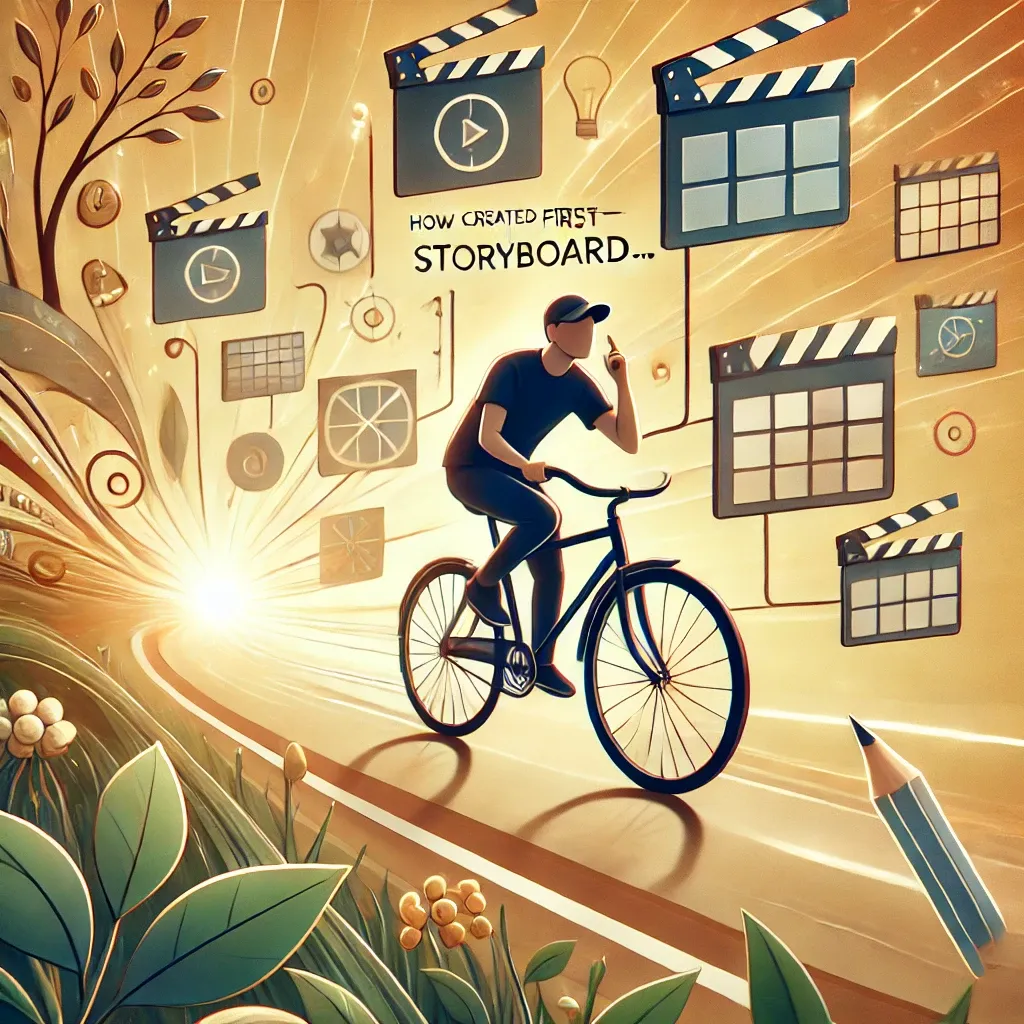How I Created My First Storyboard—And How It Felt Like Learning to Ride a Bike

To tell a great story is akin to learning to ride a bicycle. It’s a journey showcasing hand-holding, struggles, small wins and one final huzzah. A well-structured brand film takes the viewer on such a journey, gently guiding them across the story and making it relatable to them. I had the pleasure of working on creating the storyboard for Too Good To Go — a social good brand that is playing its part in reducing hunger and food wastage.
To make the brand film relatable, the story is set around the life of Jake, a young software engineer who works at a tech startup in Manchester. The storyboard showcases his struggles with managing finances, his desire to eat healthy without burning a hole in his pocket and finding a solution to all these questions through the Too Good To Go app.
- Getting on the Bicycle – The Introduction In the introduction, we showcase uncertainty — through the rising cost of living and Jake not having enough cooking skills to eat healthily. The goal here is to showcase a problem and ease the audience into the story, it is similar to how a child first struggles to mount a bicycle and needs a helping hand.
In the storyboard, Jake is showcased as a socially conscious individual who’s trying to balance sustainability and affordability.
🔹 Scene in the storyboard: Jake and his roommates discuss the cost-of-living crisis and his daily challenges. The audience is gently pulled into his world, setting up the problem that the brand will later solve.
- The Struggle – The Conflict Emerges In the second section of the storyboard, we showcase the struggle that Jake faces every day — getting healthy food at an affordable price. Here we showcase the pain points and the doubts that occur before making a breakthrough. We liken this principle to that of having learning pains when you are learning to ride a bike. The falls, the frustration, that ominous feeling of not making any progress despite your struggles.
In the storyboard, this is represented when we zoom into Jake’s face when he stands in line to buy another uninspiring meal deal while cursing the lack of better options. But despite this monotony in his eating habits, he still feels fortunate that he has enough but feels he should be doing more to help reduce food waste.
This can be likened to the struggle of finding your feet and wobbling around with training wheels on a bicycle. The answer is in sight, but the child is not quite there yet.
🔹 Scene in the storyboard: Jake, tired from work, picks up yet another sandwich and crisps from a supermarket. He stares at his phone, browsing sustainability content, wishing for a better alternative.
- Riding Without Training Wheels – The Discovery The pivotal moment or the climax of the story occurs when Jake finds out about Too Good To Go. This is similar to a person enjoying their first ride without the training wheels, it feels that a burden is off their shoulders. We have represented this rush of independence through appropriate music choices so that the feeling of joy can be felt by the audience.
Jake stumbles upon Too Good To Go while scrolling late at night. It excites him—affordable meals that also fight food waste. This is his breakthrough moment. The brand is no longer just an idea but a tangible solution.
🔹 Scene in the storyboard: Jake, lying in bed, downloads Too Good To Go and scrolls through nearby restaurants. The music shifts, signalling his curiosity and excitement.
- The First Long Ride – Adoption and Success We have expanded the bicycle analogy when Jake finds that a bakery nearby is offering their “surprise bags” which Jake is excited about and cycles to that location to find out more. This phase in the brand film shows the success of the solution and also builds trust with the audience.
🔹 Scene in the storyboard: Jake unwraps his surprise bag at home, sharing delicious pastries with his roommates. The emotional payoff is evident—he’s happy, satisfied, and part of something meaningful.
- The Denouement – The Bigger Picture Just as learning to ride a bike changes a child’s world, this brand film ends by showcasing the impact beyond the individual. The final message encourages the audience to take action by saving a “surprise bag” and helping reduce both food waste and food insecurity across the nation.
🔹 Scene in the storyboard: A montage of real-world impact—stats on food waste reduction, clips of happy customers, and a closing tagline: “Too Good to Waste. Too Good to Miss.”
Conclusion
The goal with this brand film was to not use it as a promotional tool for Too Good To Go. We wanted to see eye to eye with the audience and communicate our message of social good. We used the bicycle analogy since it's easy to relate to and we used elements from how a child learns to ride a bicycle to progress the story with the goal of drawing audiences in, resonating our message with them and ultimately inspire them to take action.
Next time you create a brand film, think of it as teaching someone to ride a bike—help them get on, guide them through the bumps, and celebrate their journey to independence.